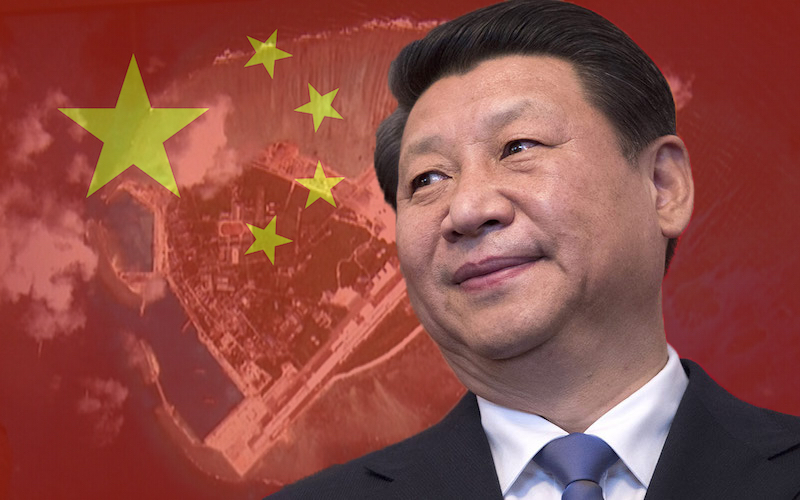
China’s Nine-Dash Line and its Misplaced National Pride
Even after The Hague decision, China’s government continues to vociferously argue that its ‘nine-dash line’ of sovereignty over the entire South China Sea is based on centuries of maritime history, and that China’s claim is air tight. In a letter to The Economist, the Chinese Foreign Ministry has even asserted that ample historical documents and literature demonstrate that China was “the first country to discover, name, develop and exercise continuous, effective jurisdiction over the South China Sea islands.”
The Chinese government has beaten this drum so hard and for so long, that the Chinese people believe it. The nine-dash line has appeared in school room maps throughout China for decades, in conjunction with the narrative of national humiliation that resulted from tales of imperialist plundering by foreign powers.
The truth is somewhat different, however. As is noted in the book, The South China Sea, written by veteran journalist Bill Hayton, the first Chinese official ever to set foot on one of the Spratly Islands was a Nationalist naval officer in 1946, the year after Japan’s defeat and its own loss of control of the Sea. He did so from an American ship crewed by Chinese sailors who were trained in Miami.
As for the story of the nine-dash line, it began a decade earlier through a Chinese government naming commission. China was not even the first to name the islands; the naming commission borrowed and translated wholesale from British charts and pilots. It is unclear how the Chinese government translated all this into a bill of goods to be sold to the Chinese people, but by now, it is a source of national pride, however misplaced it may be.
The Chinese government, and its people, have essentially backed themselves into a corner. They have been drinking the nine-dash line kool-aid for so long that even despite this year’s Hague ruling that there is no legal basis for China’s claim, and even though the Chinese government has failed to produce evidence of its declaration to back their version of the facts up, national pride will not allow them to admit that what the government is doing in the South China Sea is illegal under the very international maritime law (the United Nations Convention on the Law of the Seas – UNCLOS) to which it first subscribed on the very day in 1982 when the Convention first became a legal instrument.
Although China formally ratified UNCLOS in 1996, in 2006 the Chinese government filed a statement with UNCLOS saying that it “does not accept any of the procedures provided for in Section 2 of Part XV of the Convention with respect to all the categories of disputes referred to in paragraph 1 (a), (b), and (c) of Article 298 of the Convention.” These provisions of the Convention refer to “Compulsory Procedures Entailing Binding Decisions” issued by at least four venues: the International Tribunal on the Law of the Sea, the International Court of Justice (ICJ), an “arbitral tribunal” which may refer to the Permanent Court of Arbitration (PCA), and a “special arbitral tribunal.”
While there are venues available for the resolution of disputes under the UNCLOS regime, China does not wish to be bound by its compulsory processes — the ICJ and PCA included. In essence, it wants to be able to pick and choose which of the statutes of the treaties it has voluntarily signed that it wishes to adhere to, and be free to ignore those that it finds ‘inconvenient.’
Can a state remain a party to a treaty or convention without being bound by its rules? Can contracting states adhere to an international legal regime and simultaneously opt out of any binding force required or to be required by that regime? A state can be found to be in violation of a substantive legal norm even without a coercive or compulsory judgment in a given venue, provided of course that there is truth to the argument supporting a violation and is appreciated by the alternative venue.
While China disavows UNCLOS against the Philippines, it is expressly invoking UNCLOS provisions in its claims against Japan – so it wants to have its cake and eat it, too. In 2009, China submitted a claim over the Senkaku Islands (which, like Scarborough Shoal and the Spratlys, are believed to be fuel rich) and turned to UNCLOS rules in defining and delineating its continental shelf beyond the 200 nautical mile exclusive economic zone, again within the meaning of UNCLOS. There is some international legal doctrine supporting the view that a state’s acts in one place can be used as an admission and adversely bind that State in another set of circumstances.
The larger point is that China has not personified the Rule of Law in this case, or in others related to maritime borders, and wants to be able to ‘cherry pick’ which provisions of international treaties it will willingly comply with, and which it will not. That is behavior unbecoming of a rising global power and will make states which are signatories to treaties with China wonder if its signature is worth the paper it is printed on. This cannot be in China’s long-term interest.
The Chinese government had an opportunity to ‘pivot’ after The Hague ruling, but it chose not to, for it is a question of national pride, even if that pride is based on a doubtful historical record. In the absence of proof to the contrary, the only conclusion to be drawn is that the government has dug itself into a hole, having drunk its own kool-aid for so long, and having sold it to the Chinese people for so long, that it cannot reverse itself without losing face and credibility with its own people. That is a bad place to be.

